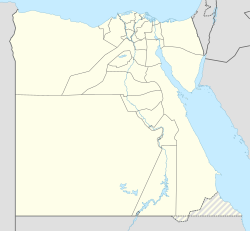History
During November 1941, No. 252 Squadron RAF’s headquarters was based in Idku. Facilities in 1941 included an officers’ mess, and billets for personnel of the 252 Squadron RAF. It flew Bristol Beaufighters and led attacks on enemy supply trains carrying guns and ammunition near Bir Abu Mischeifa. [1] In 1942, RAF Idku is described as having a narrow, sand-packed airstrip lined by tall palm trees. Due to the location of the palm trees, landing and take-off was difficult and problematic. On 10 July, 1942, two aircraft crashed in the dark after take-off, killing both crew. One aircraft failed to clear the palm trees, while the other was found next morning off-shore. [2]
In May 1943, the No. 451 Squadron RAAF flew sea patrol duties from RAF Idku. On May 1943, facilities included a clothing store, 451 SQN operations room, sergeants’ mess, officers’ mess, and an orderly room. The sergeant’s mess was equipped with a ping pong table, a bar, and had murals painted on its interior walls, which brought comfort for personnel. A steel hangar staffed by the maintenance section personnel of No. 451 Squadron RAAF maintained Hawker Hurricane aircraft and Bristol Beaufighters. There also was an armament trailer, which provided meals for stationed personnel. Cricket matches were played on the airfield. After fighting ceased at RAF Idku, farmers returned to plough fields and cultivate farmland adjacent to the airfield. [3] In September 1944, RAF Idku served as a strategic base of operations for night defense in Alexandria, Suez Canal, Palestinian coast, and Cyprus. It also held raids on the German occupied islands of Crete, Rhodes, Kos, and others in the Aegean Sea. [4]
After World War II ended, the airfield was evidently abandoned. [5]
This page is based on this
Wikipedia article Text is available under the
CC BY-SA 4.0 license; additional terms may apply.
Images, videos and audio are available under their respective licenses.

